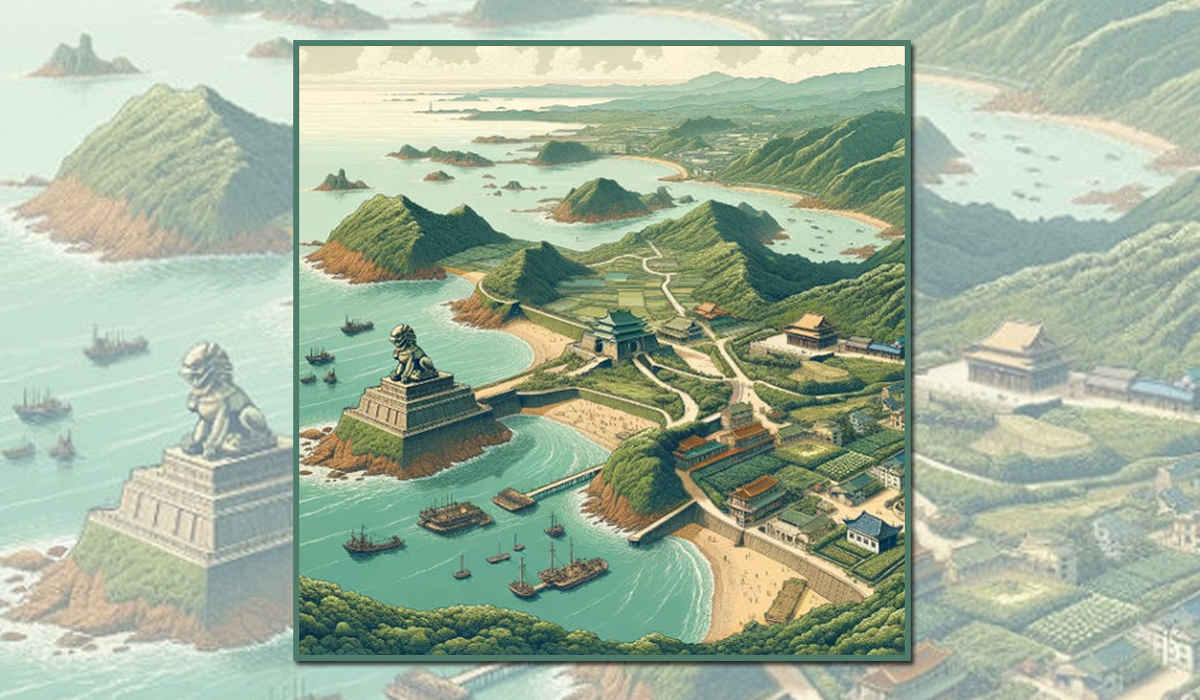
Kinmen and Matsu are two island groups controlled by Taiwan but located close to the Chinese mainland. Their strategic position and proximity to China present significant defense challenges for Taiwan, especially in the event of a blockade or other military actions by China. Despite their strategic importance, their proximity to China (approximately 10 kilometers for Kinmen) poses severe logistical and operational challenges for Taiwan.
Taiwan services these islands through regular ferry services, air transport, and military logistical support. However, these supply routes are vulnerable to Chinese naval activities, especially given the islands’ location on the Chinese side of the median line of the Taiwan Strait. The median line, though unofficial, has acted as a buffer to prevent direct military engagement between China and Taiwan. Kinmen and Matsu’s position relative to this line complicates Taiwan’s ability to defend these areas effectively.
Recent developments, such as the confirmed presence of U.S. Army Special Forces personnel on Taiwan’s outlying islands, likely contribute to China’s heightened sensitivities and potential reactions. According to Taiwan’s Defense Minister Chiu Kuo-cheng, the deployment of U.S. Green Berets in Kinmen and Penghu is part of an exchange aimed at providing a “learning opportunity” for Taiwan’s armed forces. These exchanges allow both sides to identify weaknesses, learn from each other, and address any issues. The U.S. 2023 National Defense Authorization Act mandates these training missions, which include operating the Black Hornet Nano UAV and developing necessary guidelines.
China has significant naval capabilities that can be employed to enforce a blockade on Kinmen and Matsu:
Submarines:
- Nuclear-powered attack submarines (SSNs): Approximately 12 in service, providing long-duration deployment capabilities.
- Diesel-electric attack submarines (SSKs): Approximately 50 in service, ideal for operations in shallow waters close to the coastline.
Surface Vessels:
- Destroyers and Frigates: Around 40 destroyers and 50 frigates, equipped with advanced radar, anti-ship, and anti-aircraft systems.
- Corvettes: Approximately 72, agile and suitable for patrolling and intercepting smaller vessels.
Naval Aviation:
- Anti-submarine warfare (ASW) aircraft: About 30 aircraft with long-range patrol capabilities.
- Helicopters: Around 100, providing flexibility in ASW operations.
Taiwan’s Air Defense Identification Zone (ADIZ) is a crucial component of its defense strategy, extending beyond its territorial airspace to provide early warning of incoming threats. Aircraft entering the ADIZ must identify themselves, offering Taiwan crucial time to prepare defensive measures. This zone is vital for maintaining air security and monitoring Chinese military movements in the region.
Scenario Analysis: Blockade Implementation

Pessimistic Scenario: Full Blockade and Aggressive Posturing
In the most aggressive scenario, China mobilizes its full naval and air capabilities to enforce a comprehensive blockade of Kinmen and Matsu. This would involve the deployment of nuclear-powered and diesel-electric submarines to patrol the waters, surface vessels such as destroyers and frigates to establish a perimeter and continuous surveillance by ASW aircraft and helicopters. Taiwan would likely respond by attempting to run the blockade with naval escorts and airdrops, but these efforts would face significant risks due to the proximity of Chinese forces and the lack of nearby support bases. Internationally, such a move would prompt condemnation, potential sanctions against China, and increased military presence from the United States and its allies, aiming to de-escalate the situation through diplomatic channels.
Most Likely Scenario: Limited Blockade and Diplomatic Maneuvering
A more moderate scenario involves China initiating a limited blockade, focusing on selective inspections and deterring large supply shipments while allowing some civilian traffic under stringent control. Surface vessels would enforce these inspections, with submarines on standby to provide a deterrent effect. ASW aircraft would conduct periodic patrols to maintain a visible presence. Taiwan’s response would include increasing air drops and fast supply runs to evade interception, coupled with diplomatic efforts to ease tensions. The international reaction would likely involve moderate condemnation, targeted sanctions, and extensive diplomatic negotiations to de-escalate the situation.
Optimistic Scenario: Show of Force Without Full Blockade
In the least aggressive scenario, China increases its military presence around Kinmen and Matsu by conducting large-scale naval exercises as a show of force without enforcing a full blockade. Surface vessels and submarines would maneuver aggressively but refrain from intercepting supply ships, while ASW aircraft and helicopters maintain continuous surveillance. Taiwan would respond by increasing its military readiness and conducting its exercises to ensure supply lines remain open. The international community would closely monitor the situation, with diplomatic efforts focused on preventing escalation and maintaining stability in the region.


